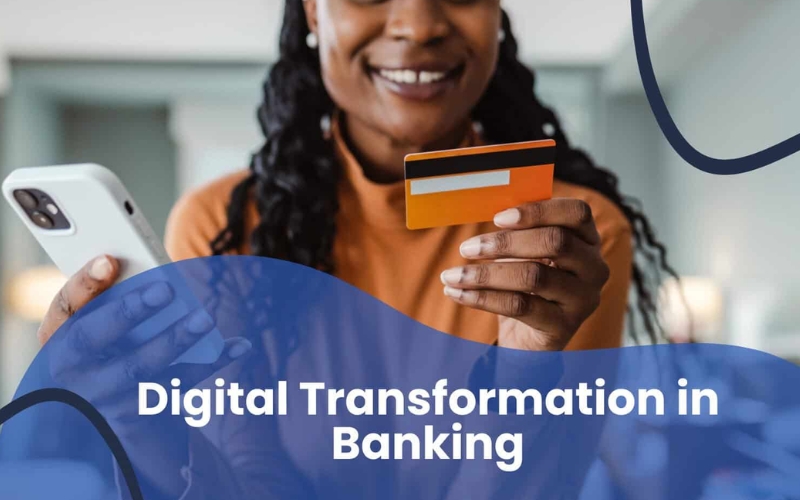Benefits and Risks The Shift Toward undergoing a significant transformation over the past decade, with digital-only banks emerging as one of the most notable trends. These banks, which operate entirely online without physical branches, have been attracting both customers and investors alike. As more traditional financial institutions shift toward digital models or partner with digital-first firms, the landscape of banking is rapidly evolving. While the shift toward digital-only banks offers numerous benefits, it also presents certain risks that both consumers and financial institutions must carefully navigate. This article delves into the benefits and risks of digital-only banks and examines their potential to shape the future of banking.
1. The Rise of Digital-Only Banks
Benefits and Risks The Shift Toward as neobanks—have gained traction in recent years, driven by advances in technology, shifting consumer expectations, and the increasing adoption of mobile devices. These banks typically offer a range of financial products, such as savings and checking accounts, loans, and credit cards, through an entirely online platform or mobile app, eliminating the need for physical branches.
Unlike traditional banks, digital-only banks leverage cutting-edge technologies such as artificial intelligence (AI), machine learning, and cloud computing to offer services that are efficient, accessible, and user-friendly. With the global trend of increasing digitalization, the demand for convenient, tech-driven banking solutions has surged, paving the way for these new financial institutions.
2. Benefits of Digital-Only Banks
The shift toward digital-only banks offers several compelling advantages for both consumers and financial institutions.
A. Convenience and Accessibility
One of the primary benefits of digital-only banks is the unparalleled convenience they offer. With the rise of mobile banking, customers can access their bank accounts, check balances, make transfers, and even apply for loans at any time, from anywhere. The 24/7 availability of these services makes managing finances simpler and more efficient, especially for those with busy schedules or those living in areas with limited access to physical branches.
- Seamless User Experience: Digital-only banks typically prioritize the user experience, with easy-to-use mobile apps and interfaces. Many neobanks offer intuitive designs, making financial management accessible even for customers who are not technologically savvy.
- Real-Time Notifications: Customers receive immediate updates about transactions, account balances, and potential issues, which helps them stay informed and avoid unexpected fees or overdrafts.
B. Lower Fees and Competitive Rates
Another significant advantage of digital-only banks is their ability to offer lower fees compared to traditional banks. Without the overhead costs associated with maintaining physical branches, digital-only banks can pass those savings onto customers in the form of reduced fees, no minimum balance requirements, and better interest rates on savings accounts.
- No Overhead Costs: Traditional banks must manage the costs of renting and maintaining physical locations, staffing branches, and other infrastructure expenses. Digital-only banks, on the other hand, have a streamlined operational model, which allows them to offer lower fees for services like account maintenance, ATM withdrawals, and money transfers.
- Better Interest Rates: Digital banks often provide higher interest rates on savings accounts or offer rewards for using their services, appealing to customers who want to make their money work harder for them.
C. Innovation and Cutting-Edge Technology
Digital-only banks are at the forefront of adopting new technologies, which can enhance customer experience and provide innovative services that traditional banks struggle to match.
- Artificial Intelligence and Machine Learning: Many neobanks use AI-driven algorithms to analyze spending habits and offer personalized financial advice. These insights help customers manage their finances more effectively, optimize savings, and avoid unnecessary spending.
- Automation and Efficiency: By automating routine processes such as credit scoring and loan approvals, digital-only banks can provide faster service than traditional banks. Customers can often apply for loans or open new accounts within minutes, with approval decisions made automatically based on real-time data.
3. Risks of Digital-Only Banks
While the rise of digital-only banks offers numerous benefits, there are also inherent risks and challenges that must be considered, particularly in terms of security, customer trust, and regulatory compliance.
A. Cybersecurity and Data Privacy Concerns
One of the most significant risks associated with digital-only banks is the potential for cyberattacks and data breaches. As these banks operate exclusively online, they are highly dependent on the security of their digital infrastructure. A data breach or hacking incident could expose sensitive customer information, such as personal details, financial transactions, and account passwords, leading to significant financial and reputational damage.
- Increased Risk of Hacking: While digital-only banks invest heavily in cybersecurity, the absence of physical locations means there is no “face-to-face” interaction that could help mitigate some of the risks of fraud. As cybercriminals develop more sophisticated techniques, neobanks must constantly evolve their security systems to stay ahead of threats.
- Data Privacy Issues: With the vast amounts of customer data that digital-only banks collect, there is a heightened risk of privacy violations. Consumers must trust these banks to safeguard their information, and any failure in this area could erode consumer confidence in digital banking.
